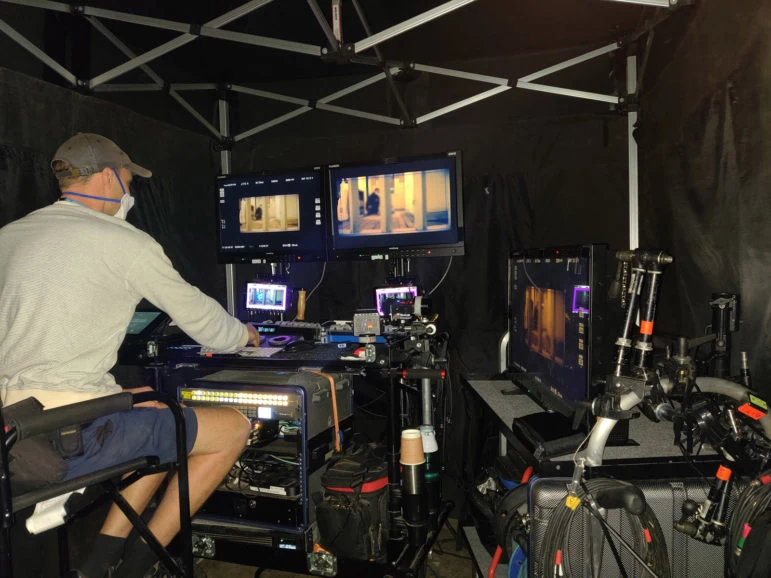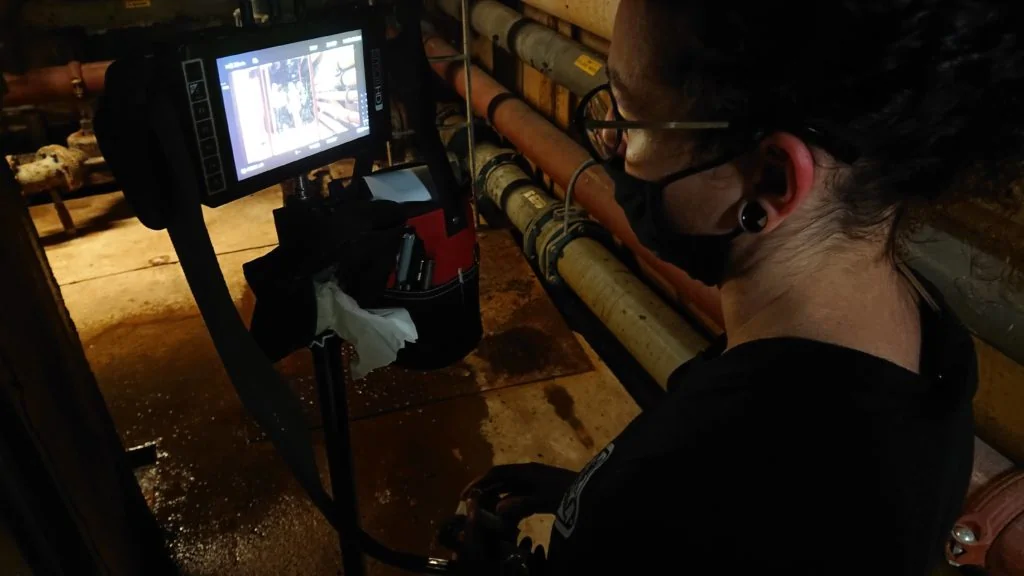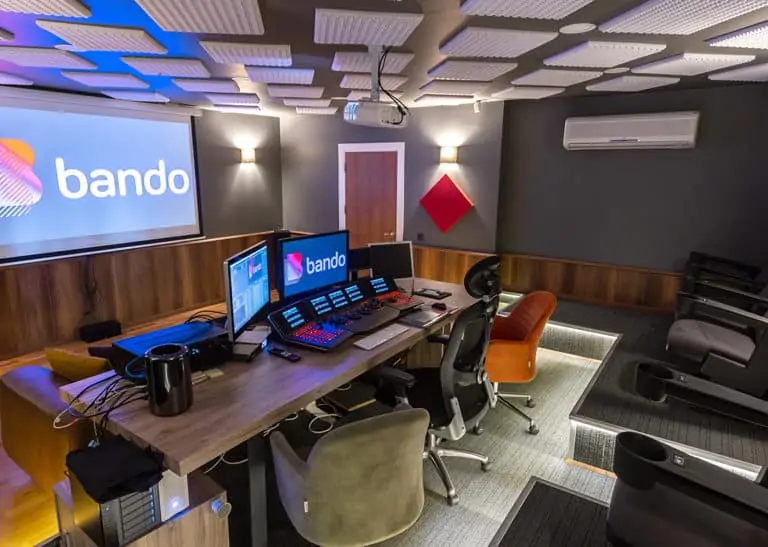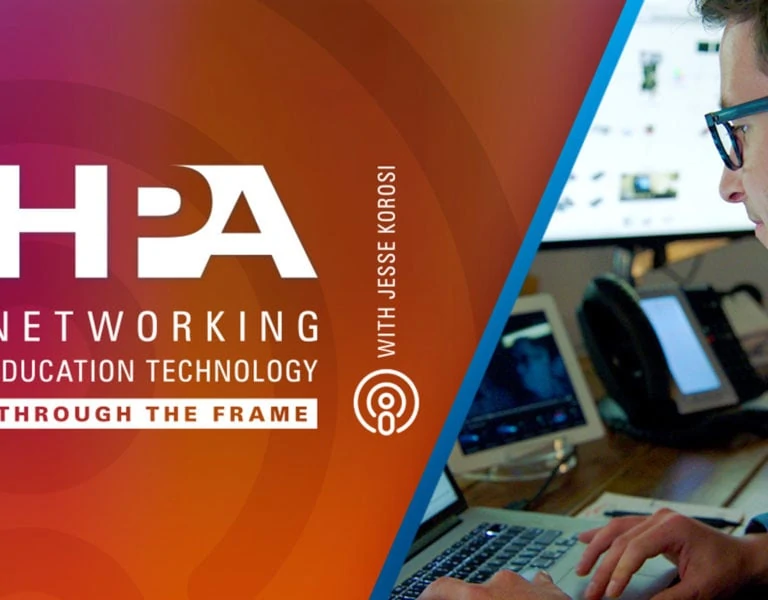PERFECTING THE WORKFLOW
We explore the evolution of the digital imaging technician’s role in helping achieve maximum image quality, the workflow wizardry surrounding it, and their collaboration with cinematographers and other members of the production team.
In the early days of digital cinema, digital imaging technicians emerged for what seemed like three main reasons. One was that early digital cinema equipment could be flighty, and another was that there was no longer a colour timer in whom the cinematographer could confide.
Mainly, though, early DITs helped film-trained crews make sense of the chaos, which should be no surprise. Compare the early twentieth century to the early twenty-first: in the 1910s, film was in flux, with a huge variety of gauges, aspect ratios and frame rates. It’s easy to suspect that the first twenty years of the twenty-first century represent a comparable period for digital cinema. We’ve seen generations of technology come and go – tape, then disk recorders, then flash, 3-chip cameras giving way to single-sensor designs, smarter codecs, and whole new display standards.
Early film eventually settled down, evolving to accommodate new ideas but constant enough to avoid tripping anyone up. It’d be nice to think that the digital age is developing the same sort of stability.
Mark Purvis, managing director at Mission Digital, recalls a time when there might be major changes from one TV season to the next. “In 2009, I was working on a TV show called Misfits, the first of three or four long-running projects shooting on the Red. We did season one, and we’d back up the rushes and generate the files for editorial. They’d produce DVDs and then ship the DVDs around London. If we shot on Monday, by Wednesday people would see the dailies. But on season two we were ingesting at the truck, generating editorial files, uploading to a platform that was the cloud before the cloud was even recognised.”

Digital Orchard’s Callum Just suggests that debate over the DIT’s role “has been a core part of being a DIT from day one – ‘this is my job, this isn’t my job’. With such a new role, what we’re doing now is completely different to what we were doing five or ten years ago.” He sees some evidence of stability emerging, at least so long as software and camera manufacturers keep talking. “If I think of the last five or six years, we haven’t had a lot of formats popping in and out. Ninety per cent of our shows are either Alexa, Red or Sony Venice. There’s a little bit of Canon work. It’s fine as long as the camera manufacturers keep releasing [compatible software] in good time.”
Ben Saffer has worked as a DIT for eight years, often through Digital Orchard’s agency. That’s long enough to have seen change, but Saffer puts at least some of the variability down to the preference of the head of department. “I was just on a job with two different cinematographers, they’re completely different in terms of the way they work with the DIT. One is in the tent next to me, looking at the lighting, the other is with a light meter around set. A lot of it really comes from the cinematographer’s preference as to how they like to work.”
Even so, Saffer suggests that a degree of convergence has taken place. “It definitely used to be the case that you’d be starting from scratch on every job – do we have a lab; do we have a dailies colourist? These days, it’s much more consistent. There’s an on-set data wrangler, it goes to a lab, the lab does backups, the dailies colourist does colour. Most of the jobs I do are pretty close to that workflow now.”
It’s hard to avoid the reality, though, that there’s a lot more complexity in a world where one camera might be capable of recording a dozen formats than there was in a world with less than a dozen popular film stocks at any one time. Before digital cinema, even electronic cameras almost invariably targeted one of a few kinds of display. Now, it’s the other way around, with monitors manually configured to display the image correctly. It’s difficult to tell whether that’s really, absolutely necessary, since camera manufacturers consider the details proprietary, but as Just puts it, it barely matters.

“[Standardisation] will never happen because the camera manufacturers want the edge over one another,” he says. “If they all shoot in one combined space it’s one less selling point for them. In theory, we have ACES – probably half our shows are ACES.” The Academy Color Encoding System is, Just says, “a great workflow when it works properly and everyone’s released the correct [software], but it scares people in the VFX world. ACES can be a daunting thing for a smaller post house.”
Purvis cautiously agrees. “ACES streamlines the process, but you still end up with, say, different lens metadata protocols when it comes to different cameras. The data footprint from camera to camera varies. But one thing that you don’t see on any spec sheet, something which has a massive impact on your workflow, is the expectation of the production. That’s the great unknown that you have to resolve through various conversations to establish where the production’s priorities are, and the cost versus risk.”
This process often encounters people at the very sharpest end of digital cinema workflows – people like data wrangler Sophie Dymond who, with less than a year in the job, is already clear that a smooth operation comes not so much from technology, but from communication – “liaising with people, making sure the right people have the right information. Because I’ve just come into it, I don’t have a comparison to make in terms of how things used to be done, but I think generally problems come from lack of clarification in the early stages, details changing.”
Inevitably, the need for that sort of organisational work moves the DIT away from engineering tasks, and Saffer suggests that “the job title is wrong, now. We’re much more involved in lighting than camera. I have the iris handsets on my cart. I help evaluate exposure, work with DP and gaffer to maintain lighting continuity across what can be long, long jobs. You can be shooting one side of a scene on day two and the other on day 60. I work with the board op as much as I do the focus puller. A lot of the confusion around what the role is would be solved with a different title.”
“The biggest issue,” Just warns, “is the rogue technicians who put themselves out as a DIT or a workflow supervisor and think that really it’s just about copy-paste, drag and drop, and you’re done. I think that’s done more harm than anything to the role of the DIT and impeded a lot of productions. We have a lot of productions coming to us which are partway through production and are struggling. Perhaps the technicians didn’t properly calculate an amount of data a format was going to use or didn’t work through the whole pipeline to see how this conform is going to happen, or they didn’t see the studio’s requirements. That’s where we’ve seen issues.”

Requirements like those are, at least, straightforward once they’re understood. Where issues of creative opinion and technology interact, as with look development or show LUTs, things can be trickier. Saffer emphasises that “with look dev you’ve got to test, got to test. I’m generally lucky that on bigger shows we do some on-set or on-location hair and make-up tests, so we have actual actors in actual costumes on actual sets. We can then use that to do the look development. I think the person to listen to on this stuff is Roger Deakins – he just has one LUT that he slightly modifies for each show and I kind of work in a similar way.”
Without any prompting, Just says much the same. “My view, which has been steered quite heavily by a couple of post houses that I’ve worked with as a DIT, is that you should have one show LUT. You should have one LUT, full stop. The idea of continuously jumping around show to show with different looks – we didn’t do it on film, and we happily and successfully shot beautiful-looking films for a hundred years. If you are artificially pumping it up, making it darker, brighter, bluer, more orange, you can get yourself in trouble quite quickly.”
Purvis concurs that “it’s invaluable that the LUT you establish for your show meets the aesthetic requirements for the cinematographer but will also function in post. You want to make sure everyone’s talking to each other and singing from the same hymn book.” Despite the complexities, though, Purvis’ focus is, he says, “not on making things simpler, but making sure creative output is optimised. The key stakeholder in any project that we work on is the script. The greatest challenge to optimising things isn’t technical, it’s psychological.”
Perhaps, then, the digital world will always need someone to look after the details, just like the people at a film lab, and if the benefit of that is flexibility, then that was probably the idea all along.


















